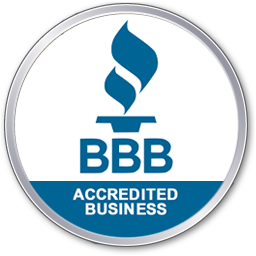Chances are if you’re reading this, you either live in a rural area or an area that gets heavy rainfall throughout the year.
If you answered yes to either of those, you’re probably already a little familiar with both dry wells and septic tanks.
There is some confusion about what differentiates a dry well from a septic tank. The truth is, while some processes may overlap, as they both are technically disposal systems, they are not interchangeable. The biggest difference is that dry wells are composed of perforated rings and septic tanks are composed of solid wall tanks.
In this post, we will cover the main differences between dry wells and septic tanks, go over the kind of maintenance and care they require, and talk in detail about how both systems work.
Note: We handle both Dry Well and Septic Tank services, from assisting with registration to maintenance and upkeep to decommissioning. For any service requests, please contact Alpha Environmental.
What is a Dry Well?
A Drywell or an Underground Injection Control (UIC) well is a man-made system used to discharge water from the surface to below the ground. Drywells are designed to receive only stormwater runoff and allow the waters to percolate into the subsurface soils through the perforated drywell sidewalls. Modern drywells are often made of perforated concrete or plastic.
Dry wells are largely used in the Pacific Northwest to handle heavy and consistent rainfall. All drywell designs, except those that service only residential rooftops, are required to be registered with the Oregon DEQ (Department of Environmental Quality).
On residential dwellings, You’ll sometimes see gutters connected to downspouts that send rainwater directly into a home’s yard. Hooking that output up to a drywell keeps the water from eroding or flooding your soil.
How Does a Dry Well Work?
Think of a traditional water well (bricks lined, hollowed out, no cover, sticking out of the earth), but instead of being visible, it’s buried beneath the ground.
The surface water from roofs and parking lots is directed to the dry well through piping and enters the dry well for temporary storage.
The stored water then percolates through the perforated walls of the dry well and slowly into the surrounding soils.
Some dry wells have a catch basin. A catch basin is basically a temporary sediment trap used as a prefilter for water prior to entering the dry well.

Residential Dry Well Installation
It is strongly recommended that your dry well is installed by a professional. If installed incorrectly, you’ll likely end up paying more in costly repairs (and possible fines) than the cost of installation.
An experienced team will know how to set up the dry well, including any catch basins, at the best location in the yard. A professional knows to check for soil conditions (such as soil absorption levels), to make sure your dry well is large enough, so the water doesn’t back up after the first heavy storm. Plus, they will know not to go too deep and risk any contamination with the water table deep beneath the soil and check to make sure you aren’t living on top of a high water table (which comes with its own set of complications).
Finally, getting your dry well installed by a professional makes sure you’re in line with all of the regulations put out by the environmental protection agency (EPA) and Department of Environmental Quality (DEQ).
Dry Well Maintenance, Repairs, and Concerns
If you have an existing dry well or are interested in having a dry well installed on your property, you’ll need to consider a few things.
- Drywell registration. As we covered above, non-roof drain dry wells need to be registered with the DEQ.
- Drywell sampling. Sampling the soil on the outside or sediment and water from the inside of the dry well is often done for annual compliance. If your dry well is used in a location that also handles chemicals or petroleum products, then sampling is a must. Depending on the site use, some properties may be prohibited from having dry wells.
- Drywell maintenance. With dry wells, there is a risk of potentially contaminating groundwater or soil. This is especially true if we are talking about commercial properties that handle hazardous materials. But even in residential areas, dry well maintenance is recommended to make sure your well will last as long as it can.
Drywell Decommissioning
In some cases, dry wells are not needed anymore. When this happens, regulations have to be followed when decommissioning the well to follow clean closure requirements.
Alpha Environmental handles all of these regulations, as well as the necessary notification before beginning the process. This notification is necessary because the decommissioning work has to be performed under the supervision of a licensed geologist, engineering geologist, or engineer.
Drywell Registration Assistance
All persons who own an existing drywell or who plan to install a drywell are required to register the drywell with the DEQ. Drywells are also required to be registered prior to decommissioning. Alpha is here to assist drywell owners with the paperwork and streamline the registration procedures.
What is a Septic Tank?
Commonly found in rural areas (or in locations not connected to a centralized sewage system), a septic tank is an onsite sewage system that works as a waste disposal method that removes contaminants from your wastewater.
While a septic tank is a wastewater treatment system, it isn’t accurate to say it does everything a centralized sewage system does. A septic tank works more as “a good substitute” for locations without connection to a larger and more complex sewage system.
How Does a Septic Tank Work?
Septic tanks have inlet and outlet pipes. Inlet pipes take waste from the house and run it through the tank’s breakdown process (which we cover in detail below), then decontaminated water is pushed through the outlet.
Here is that process down to the tiniest detail:
- Waste flows to the septic tank through inlet pipes. Unlike the dry wells we covered above, a septic tank does more than rainwater and greywater. It also handles and is built especially for wastewater and any other water from plumbing fixtures. In fact, “effluent” — the watery waste — should fill most of the septic tank (if it doesn’t, there will be problems which we cover below).
- Organic materials brought into the tank are broken down by anaerobic bacteria. Anaerobic bacteria are bacteria that don’t require oxygen to thrive, making them perfect for underground tanks.
- Sludge falls to the bottom of the tank. In this breakdown process, inorganic solids and other byproducts, known as sludge, fall to the bottom. A healthy tank will have a thin layer of sludge at the bottom.
- Scum rises to the top. While sludge falls to the bottom, the scum rises to the top. Scum consists of fats, greases, and oils.
- Any remaining solids are caught by a filter. This filter keeps solids away from the septic tank’s outlet pipe.
- Effluence flows to the septic drain field. Next, the watery waste flows to the drain field, sometimes called a leach field. Here, waste flows through perforated pipes (pipes with little holes on the side). The water leaches out into the surrounding soil, and the bacteria in the soil begin to digest the rest of the wastewater. Whereas before, your waste was being treated with anaerobic bacteria (bacteria that don’t need oxygen), now it’s being treated by aerobic bacteria (bacteria that thrive off oxygen).
- Clean water seeps down into the groundwater and aquifer.
The key difference between a dry well and a septic tank: dry well handles rainwater and (maybe) greywater, whereas a septic tank handles wastewater and actually breaks down solids in the process.
Septic Tank Maintenance, Repairs, and Concerns
- Do get your septic tank pumped by a professional. Pumping removes the buildup of sludge and scum, which slows down bacterial action in the tank. Your tank may need pumping each year, but it’s possible to go two or three years between pumpings, depending on the size of your tank and the amount of waste you run through the system. Ask your inspector to make a rough recommendation for how often your tank should be pumped.
- Don’t dump the wrong things down your home’s pipes. Here are just some of the things that have caused issues with a homeowner’s septic tank: Paint and paint thinner, feminine hygiene products, baby wipes, and diapers, cigarette butts, cat litter, paper towels, and cooking oils and fats. Putting these items (and other items like them) down your drain pipes can lead to clogging and a required maintenance call.
- Do get regular maintenance done to your septic tank. Regular maintenance of your septic system will help decrease the likelihood of an emergency situation, such as septage backups. By routinely emptying your septic system, you can reduce the odds of septic system failure.
Leach Field vs. Seepage Pit
Don’t forget a septic tank is handling human waste (and other potential hard-to-dispose of materials, depending on the location). Disposing of human waste needs to be done carefully.
We talked about septic drain fields (or leaching fields), above but some locations use seepage pits.
Seepage pits are a hole in the ground intended to receive septic effluent, such as the outlet from a septic tank. While seepage pits may be permitted when space doesn’t permit a conventional leach field, there are a few concerns.
A seepage pit is vertical (opposite to the horizontal leach field). That may not seem like a significant deal, but it does matter.
By being vertical, the seepage pit is buried deeper under the earth, and this means the effluent waste is only going to get anaerobic bacteria treatment and not aerobic bacterial treatment.
Because of this, using a seepage pit isn’t recommended, and if you do need to use a seepage pit, chances are you’ll need other modifications done to make sure your septic system isn’t causing any contamination.
Septic Tank vs. Dry Well vs. Cesspool
Let’s debrief.
While they may have similar functions (handling water) and locations (in your yard), the truth is a septic tank and dry well serve different purposes.
Another question we often get is about cesspools, so we thought we’d kill three birds with one blog post, so to speak.
A septic tank is part of a septic waste system that works to substitute the job done by a centralized sewage system. A septic tank takes in wastewater, breaks it down through anaerobic and aerobic processes, and lets the now de-contaminated water seep back into the surrounding soil.
A dry well is a drainage system that is only used for rainwater or greywater. While buried underground, like a septic tank, a dry well does not handle wastewater. Sometimes a catch basin is built with a dry well to better trap sediments and remain unclogged as runoff water moves into the surrounding soil.
A cesspool (sometimes called a “cesspit”) is like an inelegant, incomplete septic tank. If a septic tank is part of a septic waste management system, then a cesspool is just a stand-a-lone pit built to collect wastewater. If you have a cesspool, it’s time to reach out to professionals near you so they can upgrade your system to a more modern septic system.
Note: We handle both Dry Well and Septic Tank services, from assisting with registration to maintenance and upkeep to decommissioning. For any service requests, please contact Alpha Environmental.




